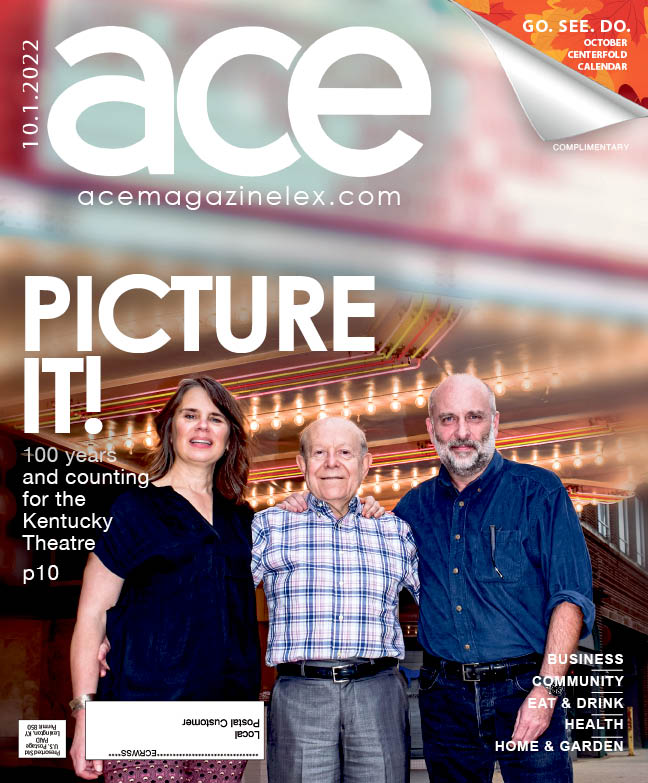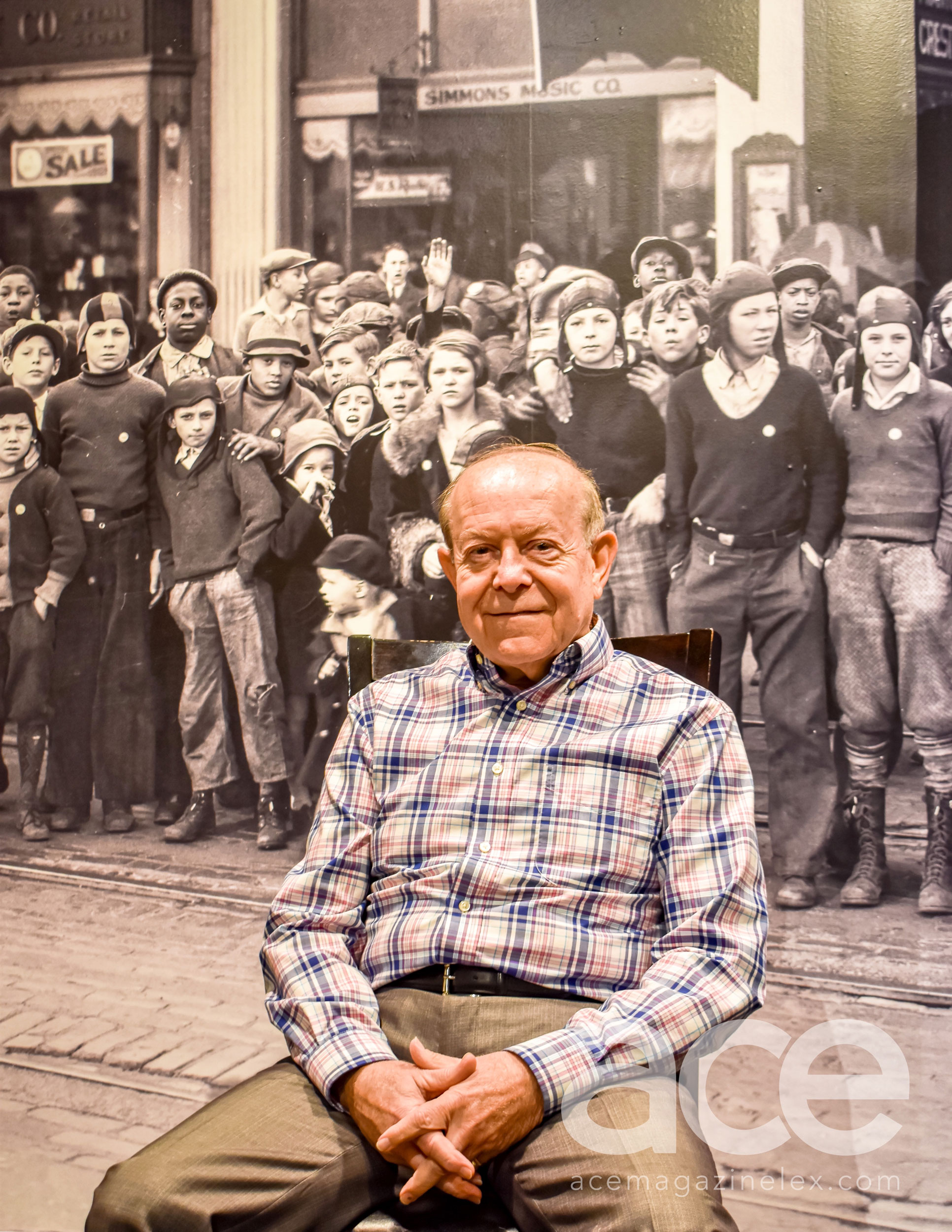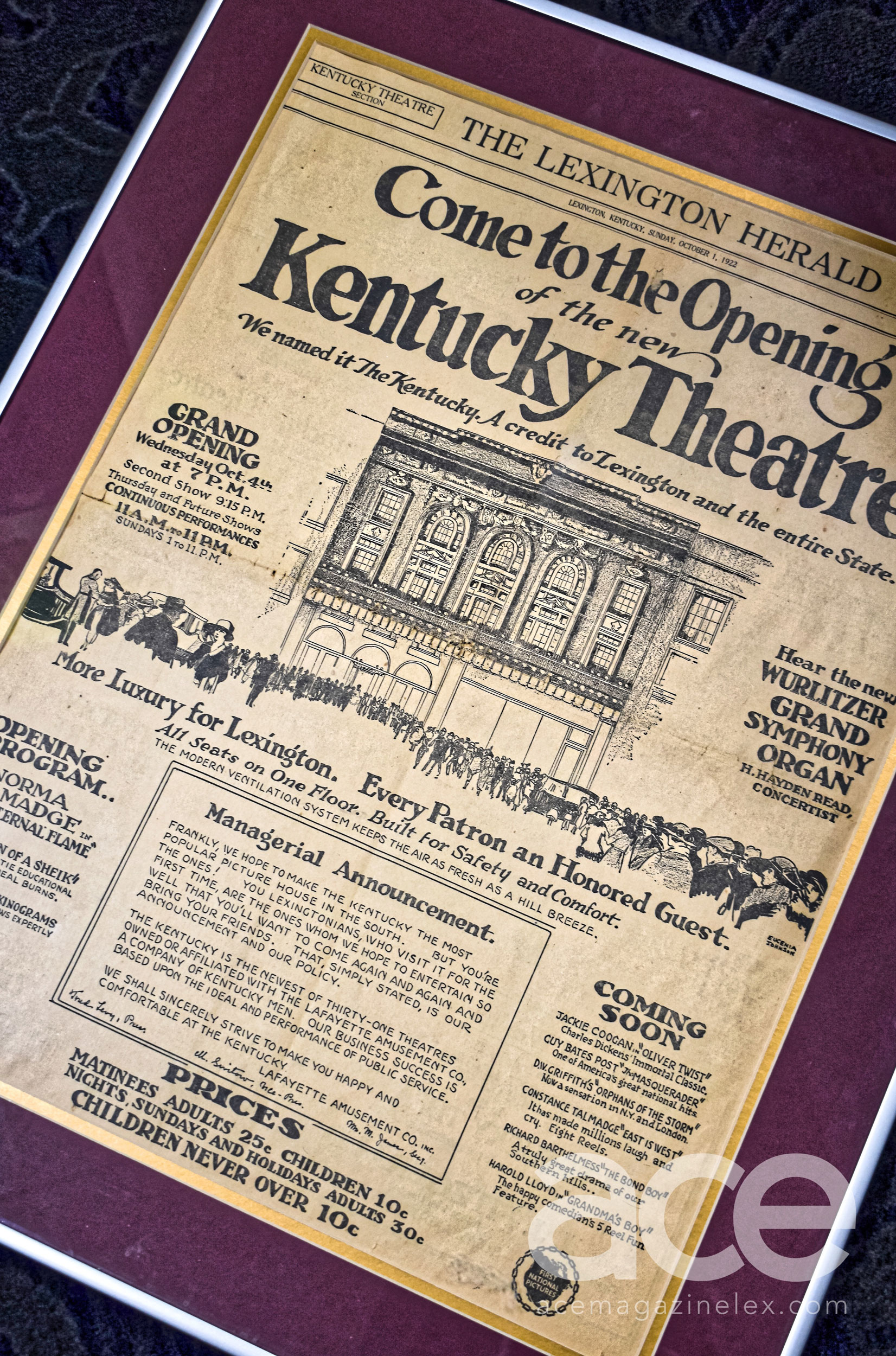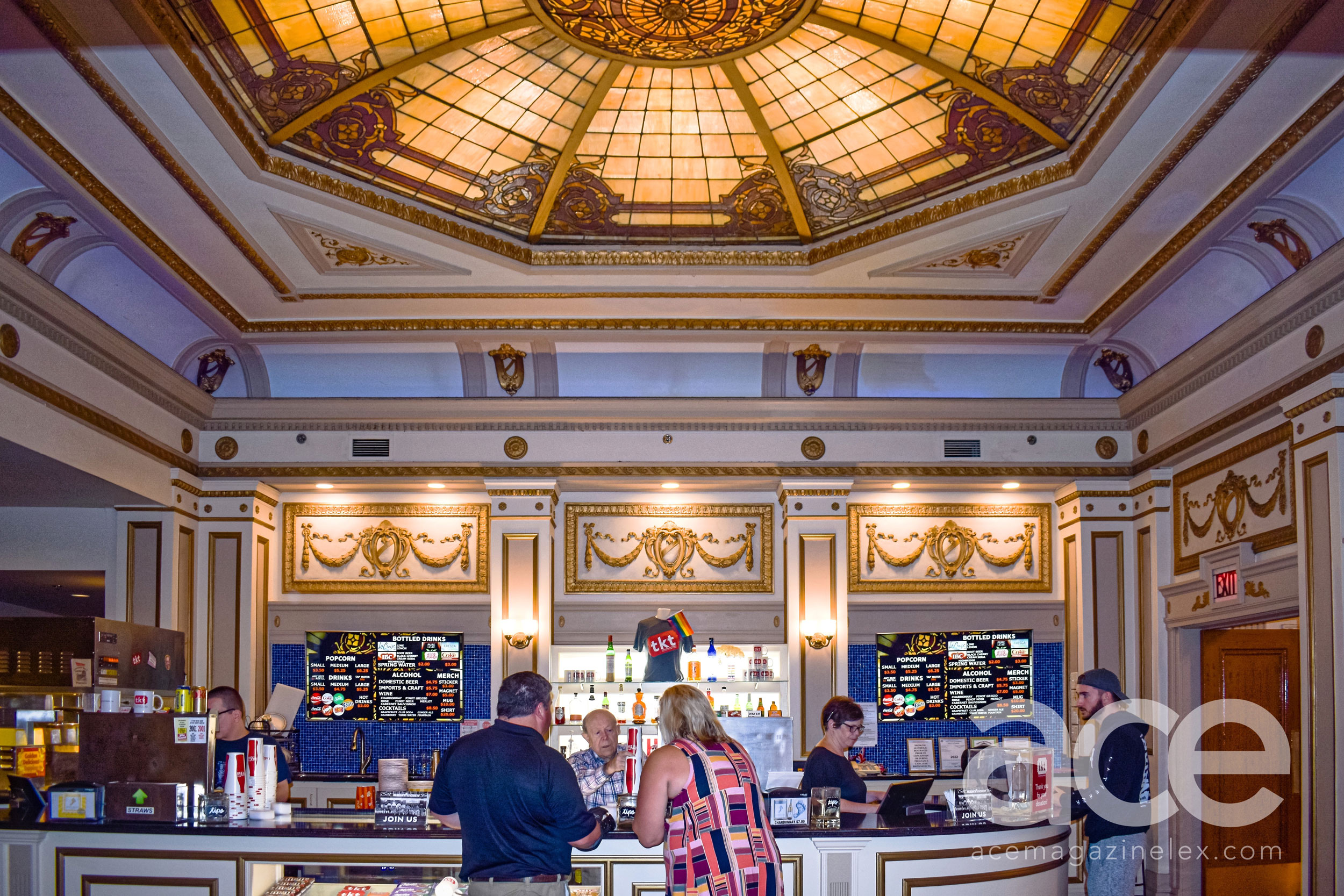On with the Show
The Kentucky Theatre Celebrates 100 years in October
Story and Photos by Kevin Nance
Picture it: Lexington, October 4, 1922. Crowds flock to Main Street to see the fabulous new Kentucky Theatre’s flashing marquee and its ornate Beaux Arts architecture, including the handsome entrance hall, the concessions lobby fragrant with fresh popcorn, and the main auditorium with its large screen and soaring ceiling dome. They settle in to watch The Eternal Flame, a silent film based on a Balzac novel and starring Norma Talmadge, the sound provided by a live organist on the Wurlitzer. Tickets are 25 to 30 cents for adults, 10 cents for children.
“Frankly, we hope to make The Kentucky the most popular picture house in the South,” the management declared on the front page of a special section in that morning’s Lexington Herald. “But you’re the ones. You Lexingtonians who visit it for the first time are the ones whom we hope to entertain so well that you’ll come again and again and bring your friends.”
And now, one hundred years later — after a century of highs and lows, including triumphs, temporary closures due to a fire in 1987 and, more recently, the pandemic, not to mention increased competition from Netflix, HBO Max and other online streaming platforms — the Kentucky Theatre is still running. It’s still attracting first-time visitors as well as regulars who appreciate the architecture and the popcorn. And it’s still working hard to keep us all coming again and again with our friends.

“You can watch whatever you want at home in your pajamas at whatever hour of day,” says Lisa Meek, part of the new non-profit management group (along with director Hayward Wilkirson and longtime manager Fred Mills) that reopened the theater a year ago after a pandemic-related hiatus. “The question now is: What gets you up and dressed and downtown to watch a movie? Fortunately for Lexington, there’s this amazing 100-year old cinema still in existence.”
To celebrate The Kentucky’s first century and kick off a second, the theater is devoting the month of October to special events and other programming. They include a benefit anniversary gala on October 8 with Jazz Age live music, short films from the period, food, cocktails and a silent auction, followed by a less-expensive shindig (tickets $15) later that same night.
Since Halloween is on the way, the theater will be showing horror classics throughout the month, including Coraline, Hocus Pocus, The Masque of the Red Death with Vincent Price and a special October 15 showing of F.W. Murnau’s German Expressionist vampire classic Nosferatu (which also premiered in 1922) with live organ accompaniment. And on October 19, live music concerts return to the Kentucky with Jeff Tweedy of Wilco.
It’s been an eventful century at the Kentucky, which for half its history has had its day-to-day operations overseen by Mills, who started as an usher and concessions attendant in 1963 and became manager in 1970. Under his supervision, the theater found and has maintained a steady mix of first-run commercial films, independent and art-house fare (much of it shown in the State Theatre, which opened next door in 1929 and now serves as the Kentucky’s second screen) and older repertory catering to cinema buffs (which the current management has increased and curated, especially during periods when first-run offerings are skimpy).
Over the years, the Kentucky found two sweet spots, the first with period costume dramas such as Merchant-Ivory’s Howards End and A Room With a View and, more recently, the first Downtown Abbey film (2019), all of which drew large audiences. The second sweet spot consists of quirky youth-oriented flicks such as Dazed and Confused (which drew long lines of moviegoers during a heavy snowstorm at its 1993 opening and ran for months afterward) and the Kentucky’s all-time top draw, The Rocky Horror Picture Show, the cult classic which has had hundreds of midnight screenings since its opening in 1975.
The second sweet spot consists of quirky youth-oriented flicks such as Dazed and Confused (which drew long lines of moviegoers during a heavy snowstorm at its 1993 opening and ran for months afterward) and the Kentucky’s all-time top draw, The Rocky Horror Picture Show, the cult classic which has had hundreds of midnight screenings since its opening in 1975.
Even now, Rocky Horror is still going strong at the Kentucky, with midnight showings drawing as many as 600 people on multiple occasions over the past year. The movie’s tradition of raucous audience participation now also features a live onstage troupe, The Master’s Affairs, who appear onstage and act out the scenes as they unfold onscreen. “We love them,” Mills says. “They’re keeping it alive.”
But despite being on relatively solid financial footing at the moment — thanks to steadily increasing ticket sales, a new membership program and some significant new donors (including Stephen Taylor, profiled on the Ace cover this time last year, who’s pledged $25,000 over the next year) — the Kentucky’s future, its management recognizes, is far from assured.
Not only does the theater face increased competition from the Internet and its more traditional rivals, the Cinemark and Regal theater chains, it now has to contend with another downtown theater, LexLive, the cinema and entertainment complex at Broadway and High Street which includes a sports bar and a bowling alley along with several movie screens.
 But the Kentucky still has assets that distinguish it from its competition: its architecture (which includes multiple elegant domes, including one hovering over the concession area); cheaper ticket and concession prices; and a loyal regional following that transcends Lexington proper. “People come from Paris, Versailles, and Frankfort, not just Lexingtonians,” Mills notes. “That affection and feeling for the theater is spread throughout Central Kentucky.”
But the Kentucky still has assets that distinguish it from its competition: its architecture (which includes multiple elegant domes, including one hovering over the concession area); cheaper ticket and concession prices; and a loyal regional following that transcends Lexington proper. “People come from Paris, Versailles, and Frankfort, not just Lexingtonians,” Mills notes. “That affection and feeling for the theater is spread throughout Central Kentucky.”
At the same time, the management is also wary of a certain complacency among segments of the Kentucky Theatre faithful. Those folk support the theater in theory, but like fans of other local institutions — such as the beloved Parkette Drive-In, which closed recently — have trouble showing up with any regularity.
“There’s a cautionary tale there, for sure,” Wilkirson says. “We’re a little luckier than the Parkette was, in that we do have a lot of people who come regularly. But as Fred will tell you, there are people who say ‘I love the Kentucky Theatre,’ but you might see them once a year. So you do have to put your money where your mouth is. If you support the Kentucky Theatre, if you just can’t imagine Lexington without it, then we hope to see you here, soon and on a regular basis. We look forward to it.”
This article appears on page 10 of the October 2022 print edition of Ace Magazine. A selection of 33 years of Ace Magazine’s Kentucky Theatre archives appears on page 9.








